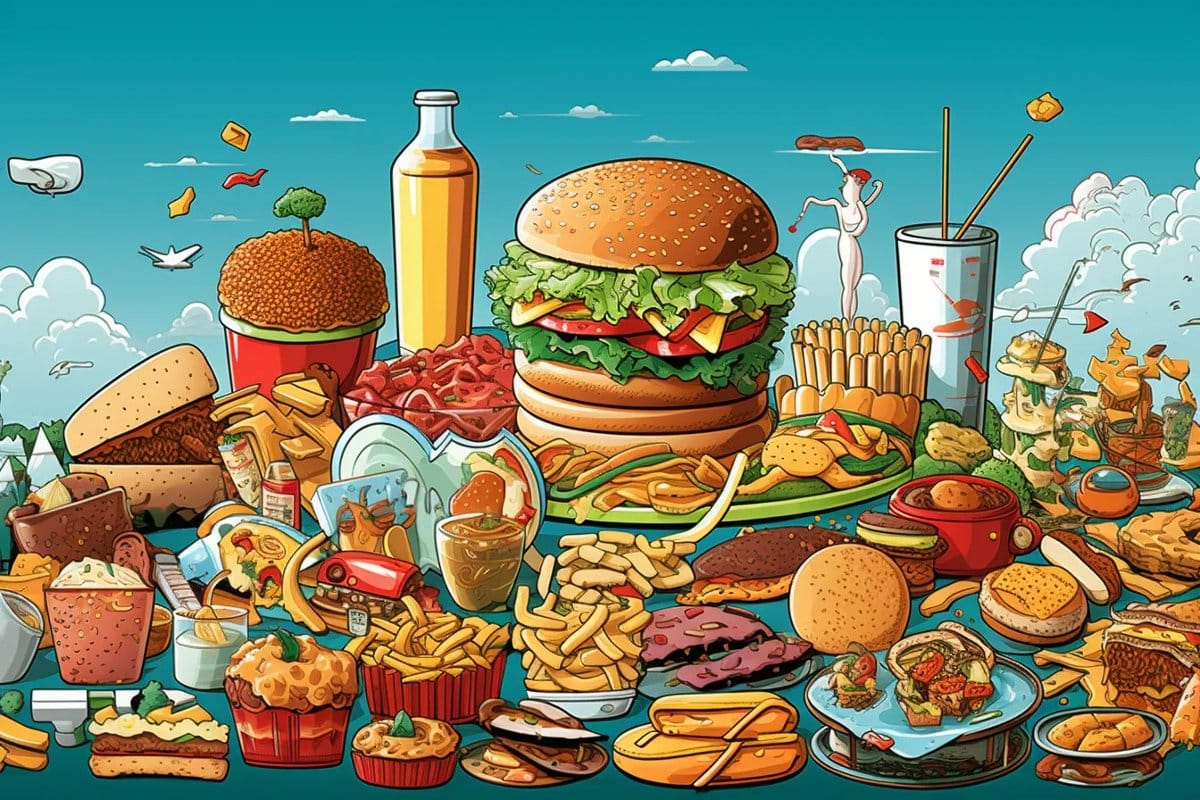Summary: A recent study has gone against conventional thinking about food preferences, especially in relation to ultra-processed foods (UPFs).
This study, which engaged 224 adults, thoroughly analyzed the reactions to 52 different familiar foods based on factors such as energy density, level of processing, and carbohydrate-to-fat ratio. Surprisingly, the findings showed that UPFs did not receive higher likability or preference compared to less processed alternatives. Instead, the research revealed that foods with a balance of carbohydrate and fat content, heightened taste intensity, and lower fiber content were understandably more favored.
These results suggest that our fundamental preferences may be oriented toward maximizing calorie consumption over feeling full, a quality that is suitable for coping with varying food availabilities but problematic in today’s context of food abundance.
Key Facts:
- Contrary to common belief, UPFs were not more favored compared to less processed foods.
- Foods with balanced carbohydrate-to-fat ratio and increased taste intensity were preferred.
- The study suggests that humans instinctively prefer less filling but calorie-dense foods, indicating an evolutionary adaptation for optimizing calorie intake.
Source: University of Bristol
The study, carried out by the Nutrition and Behaviour Group at Bristol, aimed to challenge the often-untested expectations about food energy density, processing level, and carbohydrate-to-fat ratio as main influences on food preference and likability.
During the experiment, the 224 participants were presented with a variety of familiar foods, ranging from low to high energy density and processing levels, including UPFs, and with different carbohydrate-to-fat ratios. Participants rated the food items based on taste pleasantness, desire to eat, perceived sweetness, and saltiness experienced through imagination. The validity of this method was confirmed by finding strong correlations between sweetness ratings and sugar content in the foods.
Findings from the study indicated that, on average, UPFs did not receive higher likability or preference than processed or unprocessed foods. Instead, foods combining equal amounts of carbohydrate and fat were favored compared to those with the same caloric content mostly from carbohydrates or fats. This effect is known as the “combo” effect, which has been seen in earlier research as well.
Further results showed that foods with higher dietary fiber content were less preferred, while those with more intense taste (primarily related to sweetness and saltiness) were more liked and desired.
Lead author of the study, Professor Peter Rogers, commented that UPF results were surprising and challenged the assumption of UPFs being ‘hyperpalatable’, highlighting that this has not been directly addressed before. Despite that, neither ultra-processing nor energy density predicted liking in the study, but the carbohydrate-to-fat ratio, food fiber content, and taste intensity accounted for over half variability in liking across test foods.
Professor Rogers speculated that this suggests that humans tend to savor foods with similar amounts of carbohydrate and fat, and lower fiber content, as these foods are less filling for the given number of calories, indicating the preference for calories over fullness.
Moreover, the Nutrition and Behaviour Group is continuously testing the balance between calories and fullness as a concept in their ongoing studies of food liking and meal preferences, across different countries and cuisines.
Funding: This research was funded by the University of Bristol’s School of Psychological Science.
About this neuroscience and diet research news
Author: Joanne Fryer
Source: University of Bristol
Contact: Joanne Fryer – University of Bristol
Image: The image is credited to Neuroscience News
Original Research: Open access.
“Evidence that carbohydrate-to-fat ratio and taste, but not energy density or NOVA level of processing, are determinants of food liking and food reward” by Peter Rogers et al. Appetite
Abstract
Evidence that carbohydrate-to-fat ratio and taste, but not energy density or NOVA level of processing, are determinants of food liking and food reward
This virtual (online) study tested the common but largely untested assumptions that food energy density, level of processing (NOVA categories), and carbohydrate-to-fat (CF) ratio are key determinants of food reward.
Individual participants (224 women and men, mean age 35 y, 53% with healthy weight, 43% with overweight or obesity) were randomised to one of three, within-subjects, study arms: energy density (32 foods), or level of processing (24 foods), or CF ratio (24 foods). They rated the foods for taste pleasantness (liking), desire to eat (food reward), and sweetness, saltiness, and flavour intensity (for analysis averaged as taste intensity).
Against our hypotheses, there was not a positive relationship between liking or food reward and either energy density or level of processing. As hypothesised, foods combining more equal energy amounts of carbohydrate and fat (combo foods), and foods tasting more intense, scored higher on both liking and food reward.
Further results were that CF ratio, taste intensity, and food fibre content (negatively), independent of energy density, accounted for 56% and 43% of the variance in liking and food reward, respectively. We interpret the results for CF ratio and fibre in terms of food energy-to-satiety ratio (ESR), where ESR for combo foods is high, and ESR for high-fibre foods is low.
We suggest that the metric of ESR should be considered when designing future studies of effects of food composition on food reward, preference, and intake.


